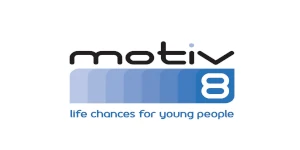Vehicle Payment Questions
The car insurance buy back process can seem complicated and time consuming. However it might be worth exploring this option if you want to keep your car after Category B, S or N type damage.
Once you’re sure of the vehicle’s write off category and have received confirmation from your insurer as to how the define the damage yo can begin the process. There may still be an option to buy the vehicle back and either fix it yourself or sell it as it is for salvage. If you don’t want your insurer to retain your car, you need to agree to a buy back figure, also known as salvage deduction.
Buy Back Questions
- Can I Buy My Car Back From an Insurance Company in the UK?
- Can I Buy My Car Back if it’s Written Off?
- Do I Have to Accept the Insurer’s Offer on a Totalled Vehicle?
- What Does a Totalled Car Mean?
- What is CIL (Cash in Lieu)?
- What is PAV (Pre-accident value)?
- How Much Will I Get for an Insurance Buy Back?
- How Can I Calculate Car Buy Back Value?
- Can I Keep my Vehicle if the Insurance Company Totals it?
Can I Buy My Car Back From an Insurance Company in the UK?
Yes, you can request to buy back your car from your insurance company. You should do your research first, including looking at the category of the car and considering if buying it back makes financial sense.
Can I Buy My Car Back if it’s Written Off?
Yes, if your car has been written off as a total loss by your insurer, you can request a buy back. Your insurer will provide you with the cost to keep your salvage vehicle, which you can sometimes negotiate. We recommend you use our salvage calculator to check the cost you are being quoted before making any formal arrangements.
Do I Have to Accept the Insurer’s Offer on a Totalled Vehicle?
No, you don’t have to accept the insurer’s offer on your totalled vehicle. Insurers often go in with low valuations, so it is worth negotiating, objecting or even raising a formal complaint if you feel it’s necessary. Your insurer can’t take ownership of your vehicle until you accept the settlement figure.
The ABI/Lloyd’s Salvage Code says: “In the event of a dispute between the insurer and other interested parties regarding categorisation, the matter should be escalated to an appropriately qualified person who assumes responsibility for the final decision.“
What Does a Totalled Car Mean?
A totalled car is one that an insurance company has stated is written off as a total loss. This is usually caused by accidental damage, such as an accident on the road. It means that the insurance company has decided the vehicle is not financially viable to repair or cannot be repaired easily or safely.
An insurance assessor will work out the pre-accident value of your vehicle, as well as the cost of the repairs and determine if it is a total loss. Typically, if the repair cost is more than 75% of the pre accident value, the car will be written off.
What is CIL (Cash in Lieu)?
CIL or cash in lieu is an offer that insurers sometimes provide without your car or van being categorised. This is normally only reserved for when the repair cost is lower than the actual value of the vehicle. The figure paid as cash in lieu is the estimated repair cost. If you choose this option, your vehicle will not be written off or given a category marker.
What is PAV (Pre-accident value)?
PAV or pre-accident value is the amount your vehicle was worth prior to whatever caused it to be damaged or written off.
Sometimes this is negotiable if you can demonstrate that similar cars are advertised for more money or that ‘Cap/glasses retail’ is higher than your insurer is suggesting. It is worth noting, if your insurer agrees to increase the PAV of your car, the buy back (also known as salvage deduction) will also usually increase.
How Much Will I Get for an Insurance Buy Back?
If your car is written off as a total loss by your insurer, you will be given a PAV, salvage deduction and an ‘amount payable’. The payable amount is the PAV minus salvage deduction, if you want to keep the car.
How Can I Calculate Car Buy Back Value?
We recommend using our salvage car value calculator to find out what your car is worth. Simply enter your registration and postcode for an instant quote.
Can I Keep my Vehicle if the Insurance Company Totals it?
Yes, if your insurance company states your car is written off as a total loss, you can request a buy back or salvage deduction.
Should I Buy Back my Totalled Car?
In some cases, it may make sense to buy back your totalled car, however, it is not always the best option.
You need to consider the category marker on your car, any hidden damage that may be discovered during the repairs, and if it is a good option for you financially. There isn’t a one size fits all answer for this question. You need to do your research and think about what it means to you.


